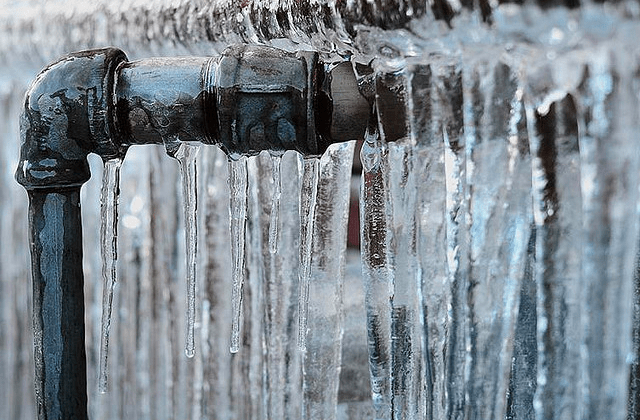Protecting Against Frozen Pipes in Cold Weather: Key Tips
Click HereNearly everybody has got their personal way of thinking about How to Prevent Your Pipes From Freezing.

Winter can damage your plumbing, especially by freezing pipelines. Below's exactly how to prevent it from taking place and what to do if it does.
Introduction
As temperature levels drop, the threat of frozen pipelines boosts, possibly leading to costly fixings and water damages. Understanding just how to prevent icy pipelines is vital for property owners in cold environments.
Avoidance Tips
Shielding prone pipelines
Cover pipes in insulation sleeves or make use of warmth tape to safeguard them from freezing temperature levels. Focus on pipelines in unheated or outside locations of the home.
Heating methods
Keep indoor spaces properly warmed, particularly locations with pipes. Open up closet doors to enable warm air to distribute around pipelines under sinks.
Just how to determine frozen pipes
Seek decreased water flow from faucets, unusual odors or noises from pipelines, and noticeable frost on revealed pipelines.
Long-Term Solutions
Architectural changes
Take into consideration rerouting pipelines far from exterior walls or unheated areas. Include extra insulation to attics, cellars, and crawl spaces.
Updating insulation
Purchase high-grade insulation for pipes, attic rooms, and wall surfaces. Appropriate insulation helps keep consistent temperature levels and lowers the danger of frozen pipelines.
Shielding Outside Plumbing
Yard hoses and exterior faucets
Detach and drain pipes garden hoses before winter. Install frost-proof spigots or cover outdoor taps with insulated caps.
Comprehending Frozen Pipes
What triggers pipes to freeze?
Pipelines freeze when subjected to temperature levels listed below 32 ° F (0 ° C) for prolonged periods. As water inside the pipelines ices up, it increases, putting pressure on the pipeline wall surfaces and potentially triggering them to break.
Threats and problems
Icy pipelines can cause water system interruptions, building damages, and expensive repair work. Ruptured pipelines can flood homes and create comprehensive architectural damages.
Indications of Frozen Pipes
Recognizing frozen pipelines early can avoid them from breaking.
What to Do If Your Pipes Freeze
Immediate actions to take
If you presume icy pipes, keep taps open to soothe pressure as the ice thaws. Make use of a hairdryer or towels taken in hot water to thaw pipelines slowly.
Verdict
Protecting against frozen pipes calls for positive measures and fast reactions. By recognizing the causes, indicators, and safety nets, property owners can safeguard their plumbing throughout cold weather.
5 Ways to Prevent Frozen Pipes
Drain Outdoor Faucets and Disconnect Hoses
First, close the shut-off valve that controls the flow of water in the pipe to your outdoor faucet. Then, head outside to disconnect and drain your hose and open the outdoor faucet to allow the water to completely drain out of the line. Turn off the faucet when done. Finally, head back to the shut-off valve and drain the remaining water inside the pipe into a bucket or container. Additionally, if you have a home irrigation system, you should consider hiring an expert to clear the system of water each year.
Insulate Pipes
One of the best and most cost-effective methods for preventing frozen water pipes is to wrap your pipes with insulation. This is especially important for areas in your home that aren’t exposed to heat, such as an attic. We suggest using foam sleeves, which can typically be found at your local hardware store.
Keep Heat Running at 65
Your pipes are located inside your walls, and the temperature there is much colder than the rest of the house. To prevent your pipes from freezing, The Insurance Information Institute suggests that you keep your home heated to at least 65 degrees, even when traveling. You may want to invest in smart devices that can keep an eye on the temperature in your home while you’re away.
Leave Water Dripping
Moving water — even a small trickle — can prevent ice from forming inside your pipes. When freezing temps are imminent, start a drip of water from all faucets that serve exposed pipes. Leaving a few faucets running will also help relieve pressure inside the pipes and help prevent a rupture if the water inside freezes.
Open Cupboard Doors
Warm your kitchen and bathroom pipes by opening cupboards and vanities. You should also leave your interior doors ajar to help warm air circulate evenly throughout your home.
:strip_icc()/snow-outdoor-faucet-pipes-4af65d1e5e904fb1aa7bf74071fe5d89.jpg)
As an avid reader about 6 Ways to Prevent Frozen Pipes, I thought sharing that piece of content was a good idea. Those who liked our article kindly make sure you remember to pass it around. Bless you for being here. Return soon.
Book Service Now